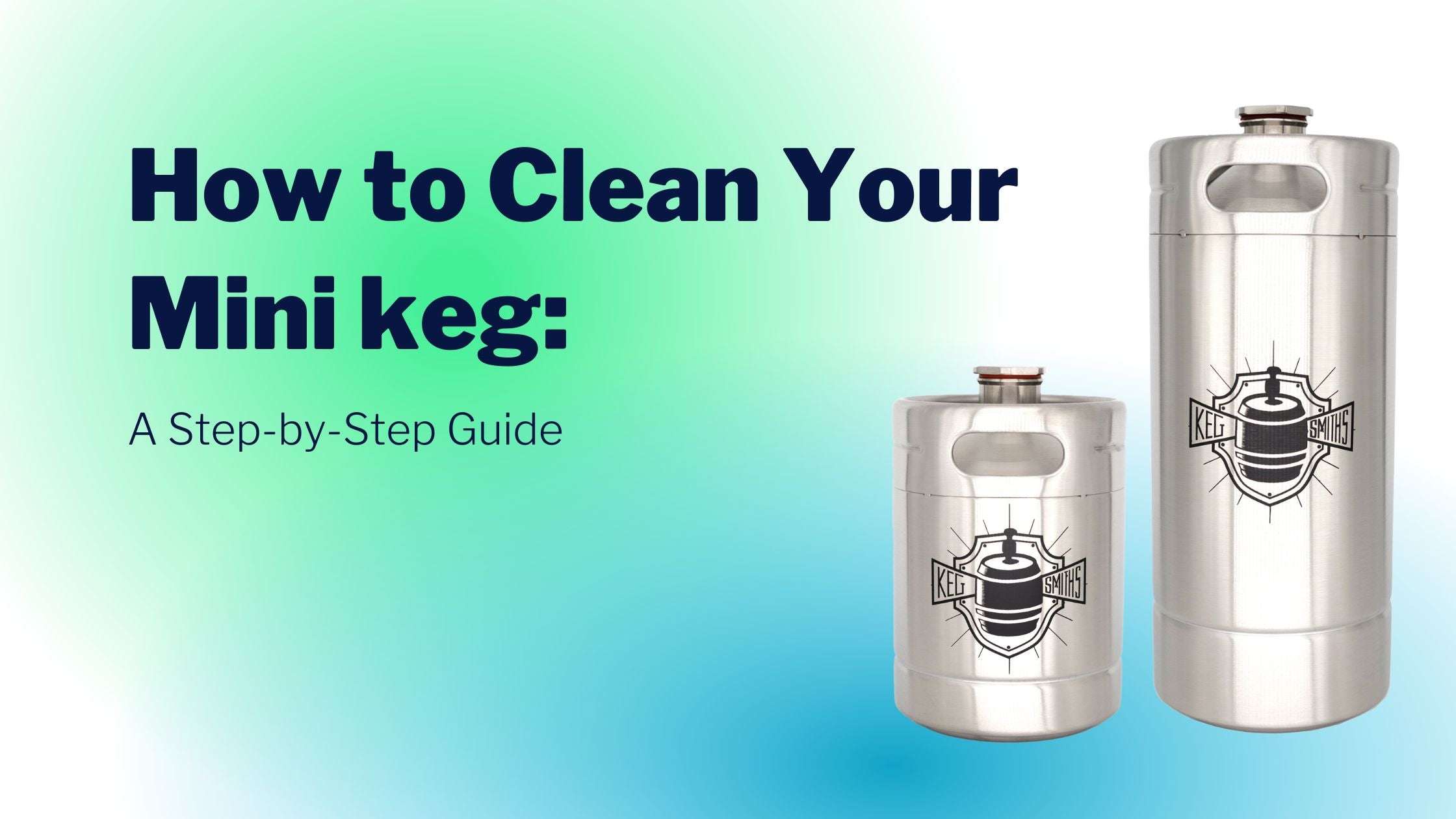For beer enthusiasts, the world of 1-gallon kegs offers a convenient and enjoyable way to store and serve their favorite brews. This in-depth guide will help you understand the benefits of these small kegs, as well as the types, proper storage, and cleaning techniques required to get the most out of them. Let's dive into the world of 1-gallon kegs!
Table of Contents
- Benefits of 1 Gallon Kegs
- Types of 1 Gallon Kegs
- Proper Storage for 1 Gallon Kegs
- Cleaning and Maintenance
- Conclusion
Benefits of 1 Gallon Kegs
One-gallon kegs are becoming increasingly popular among beer enthusiasts for a variety of reasons. Here are some of the key benefits of using these compact kegs:
- Portability: One of the most significant advantages of 1-gallon kegs is their portability. These kegs are easy to transport, making them ideal for outdoor events, picnics, or small gatherings.
- Freshness: Kegging your beer ensures it stays fresh longer, as it remains sealed and protected from air and light. This helps preserve the taste and aroma of your favorite brews.
- Cost-effective: In many cases, buying beer in bulk and using a 1-gallon keg can be more cost-effective than purchasing individual bottles or cans. You can also save on packaging materials and recycling costs.
- Eco-friendly: Using a reusable keg reduces the amount of waste generated from bottles and cans, making it a more environmentally friendly option for serving beer.
- Homebrewing: For homebrewers, 1-gallon kegs provide a convenient and efficient way to store and serve their creations. They also make it easy to share your brews with friends and family.
Types of 1 Gallon Kegs
There are several types of 1-gallon kegs available on the market, each with its features and benefits. Some of the most common types include:
- Corny Kegs: Cornelius (Corny) kegs are a popular choice among homebrewers. These stainless steel kegs come in various sizes, including 1-gallon options, and are known for their reliability and ease of use. Corny kegs use a ball-lock or pin-lock system to connect to the gas and liquid lines.
- Mini Kegs: Mini kegs are small, portable kegs that typically hold around 1 gallon of beer. They are made from stainless steel or aluminum and are designed for easy transportation. Some mini kegs come with integrated taps, while others require an external tap system.
- Growlers: While not technically kegs, growlers are another popular option for storing and transporting small quantities of beer. They typically hold 64 ounces (half a gallon) or 128 ounces (1 gallon) and are made from materials like glass, stainless steel, or ceramic. Many growlers come with a flip-top or screw-on cap to maintain freshness.
When choosing a 1-gallon keg, consider factors such as the type of beer you want to store, the amount of space you have available, and your budget.
Proper Storage for 1 Gallon Kegs
Storing your 1-gallon keg properly is essential for maintaining the quality and freshness of your beer. Here are some tips for proper keg storage:
- Temperature: Beer should be stored at a consistent temperature, ideally between 35 and 45 degrees Fahrenheit (2 and 7 degrees Celsius). Storing your keg in a dedicated kegerator or a temperature-controlled environment is recommended.
- Light: Exposure to light can damage beer, causing it to become "skunked" or develop off-flavors. Keep your keg in a dark location or use a keg cover to protect it from light exposure.
- Pressure: Maintaining proper pressure is crucial for serving beer from a keg. Monitor the pressure in your keg system and adjust it as needed to ensure the best pour and carbonation levels.
- Rotation: If you have multiple kegs, rotate them regularly to ensure that the oldest beer is consumed first. This helps maintain freshness and prevent waste.
Cleaning and Maintenance
Keeping your 1-gallon keg clean and well-maintained is essential for preserving the quality of your beer. Follow these steps for proper keg cleaning and maintenance:
- Empty the keg: Before cleaning, ensure that the keg is completely empty.
- Dismantle the keg: Remove all fittings, such as the dip tube, gas and liquid posts, and any other removable parts.
- Clean the keg: Fill the keg with a mixture of warm water and a brewery-approved cleaner. Let the solution soak for at least 30 minutes, then scrub the interior using a keg brush. Rinse the keg thoroughly with clean water to remove any residue.
- Clean fittings and parts: Soak the removed fittings and parts in a separate container filled with cleaning solution. Scrub them with a brush, then rinse thoroughly.
- Sanitize: After cleaning, sanitize the keg, fittings, and parts using a no-rinse sanitizer. Allow everything to air dry before reassembling.
- Reassemble the keg: Once all components are dry, reassemble the keg, ensuring that all seals and connections are tight and secure.
- Perform regular maintenance: Inspect your keg system regularly for wear and tear. Replace any damaged seals, gaskets, or other components as needed to maintain proper function and prevent leaks.
Establishing a routine cleaning and maintenance schedule for your 1-gallon keg will help prolong its life and ensure the best possible beer quality.
Conclusion
One-gallon kegs are a convenient and versatile option for beer lovers looking to store and serve their favorite brews. By understanding the benefits, types, proper storage techniques, and cleaning procedures, you can get the most out of your 1-gallon keg and enjoy fresh, delicious beer at home or on the go. Whether you're a homebrewer or simply a beer enthusiast, these small kegs offer a compact and eco-friendly solution for storing and serving your favorite beverages.




Leave a comment
This site is protected by hCaptcha and the hCaptcha Privacy Policy and Terms of Service apply.